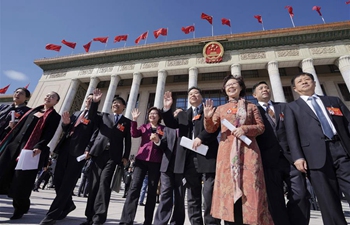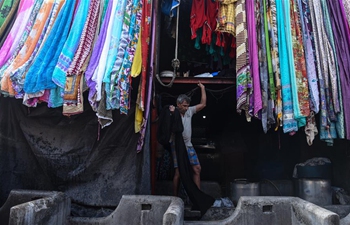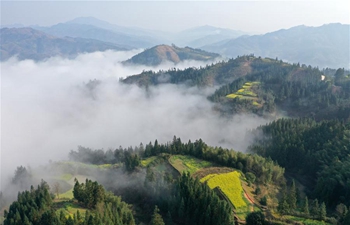MANILA, March 14 (Xinhua) -- With no rains and the water level in its source of supply dwindling, parts of Metro Manila, the Philippine capital, are beginning to suffer from water shortage and rationing.
WATER RATIONING STARTS IN MANILA
The Philippine Atmospheric Geophysical and Astronomical Services Administration (PAGASA), the state weather bureau, said La Mesa Dam, which supplies water to Metro Manila, has slipped to its lowest in 21 years and is expected to dip further during the next couple of months.
The decrease in the water level in La Mesa Dam prompted the east zone concessionaire Manila Water to cut supplies in some areas in Metro Manila and nearby provinces.
Geodino Carpio, Manila Water chief operating officer, told a news conference on Monday that increasing demand has forced to "ration" the water supply.
TV footage showed residents armed with pails queueing to collect water from fire trucks sent by the government to deliver water for residents. Temper flared as residents fight over to fetch a pail or two of water.
The water crisis has affected not only the residential areas but also a number of hospitals. Already, the Department of Health (DOH) has expressed concern over the water shortage, saying water is fundamental in ensuring hygiene and sanitation -- a must in the operation of hospitals. Some hospitals are turning away patients due to low water supply.
HEAT HITS MANY REGIONS
Several provinces in the Philippines are expected to experience dry spell conditions this March till May or June, according to the state weather bureau in its latest advisory.
PAGASA said the Philippines will experience "below norm to way below normal rainfall," particularly in the main Luzon island, Visayas region in the central Philippines and northern Mindanao in the southern Philippines.
Based on rainfall outlook, PAGASA said it is expected that 21 provinces in these regions are "potential for dry conditions," 41 provinces are "potential for dry spell," and 10 provinces are potential for drought at the end of this month.
"Generally, near average to slightly warmer than average surface air temperatures are predicted over most parts of the Visayas and Mindanao with some areas in Luzon that may experience slightly below average temperatures," PAGASA Vicente Malano said.
Rainfall assessment for the month of February showed that most areas in the country received "way below normal rainfall." PAGASA observed that rainfall from October 2018 to February 2019 several areas in the country were affected by "meteorological dry condition, dry spell or drought."
PAGASA defines drought as three consecutive months of way below normal rainfall condition. Dry spell, meantime, means three consecutive months of below normal rainfall condition.
CLOUD SEEDING TO MAN-MAKE RAIN
This weekend the Philippine Air Force (PAF) said that it will start cloud seeding operations in northern Luzon province of Isabela to save crops which are already wilting due to El Nino.
"We've already approved the request of the Department of Agriculture to do cloud seeding operations. That's the output of the meeting yesterday," PAF spokesman Maj. Aristides Galang said, adding more seeding operations will be conducted in the coming weeks in other affected provinces.
Citing figures from the Department of Agriculture, National Disaster Risk Reduction and Management Council (NDRRMC) executive director Ricardo Ricardo Jalad said damages and losses due to El Nino had been already placed at 464 million pesos (about 8.8 million U.S. dollars) as of March 8.
Jalad said the total area affected is 13,679 hectares, involving 6,034 farmers in Zamboanga Peninsula, Northern Mindanao, Davao region, Soccsksargen, Mimaropa and the newly-established Bangsamoro Autonoumous Region in Muslim Mindanao.
El Nino refers to above-average sea surface temperatures in the central and eastern Pacific Ocean and is associated with below normal rainfall.
El Nino is caused by the warming of sea surface temperature in the Pacific and can affect air and sea currents. This phenomenon resulted in reduced rainfall that led to dry spells, droughts, stronger typhoons and higher risks of forest or grass fires. Severe damage in farms, fisheries and forests may affect a large number of the country's population relying on agriculture as a primary source of livelihood.
One of the most severe El Nino that the Philippines has experienced was from late 2015 to July 2016, lasting for 18 months.













